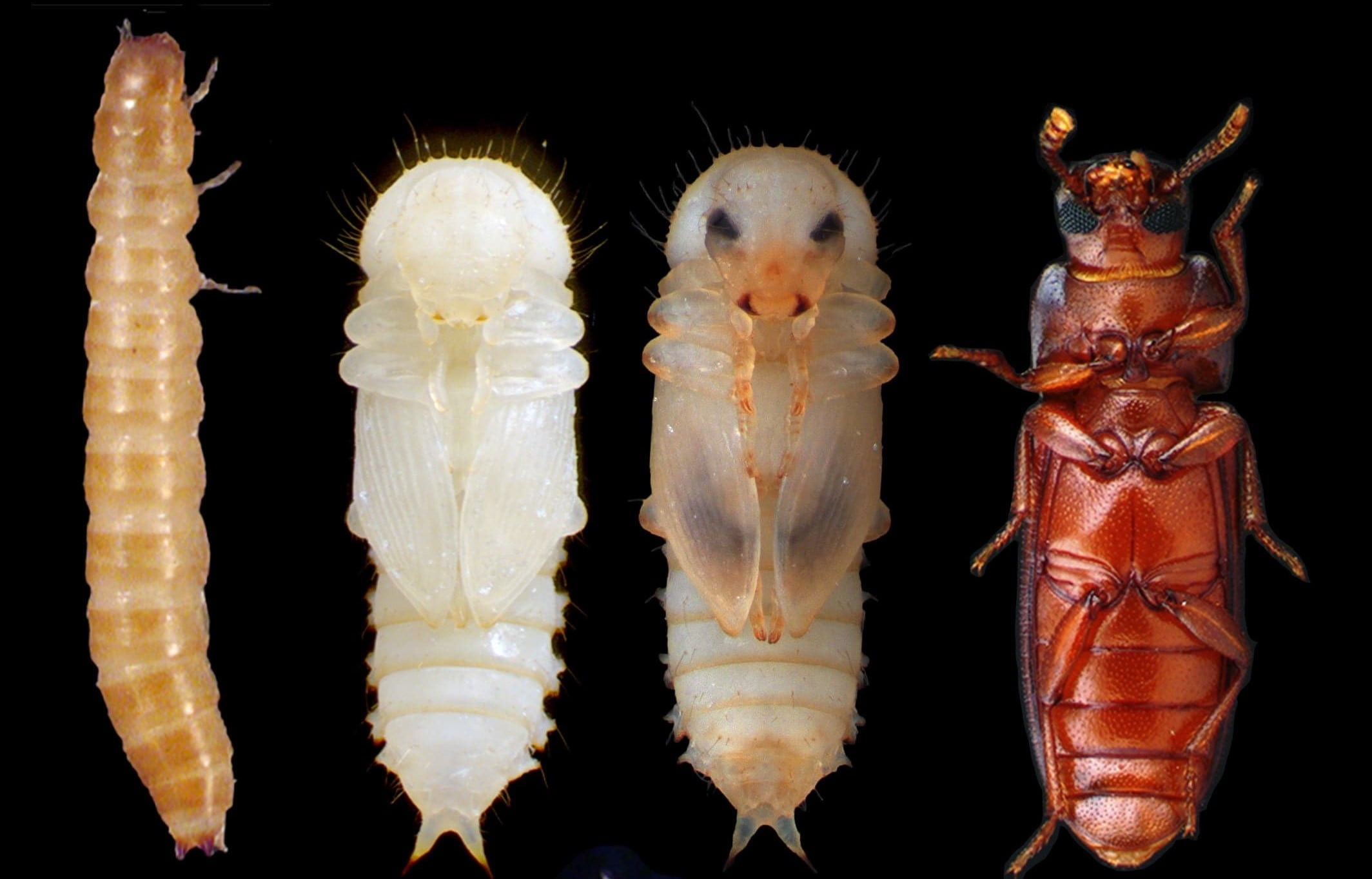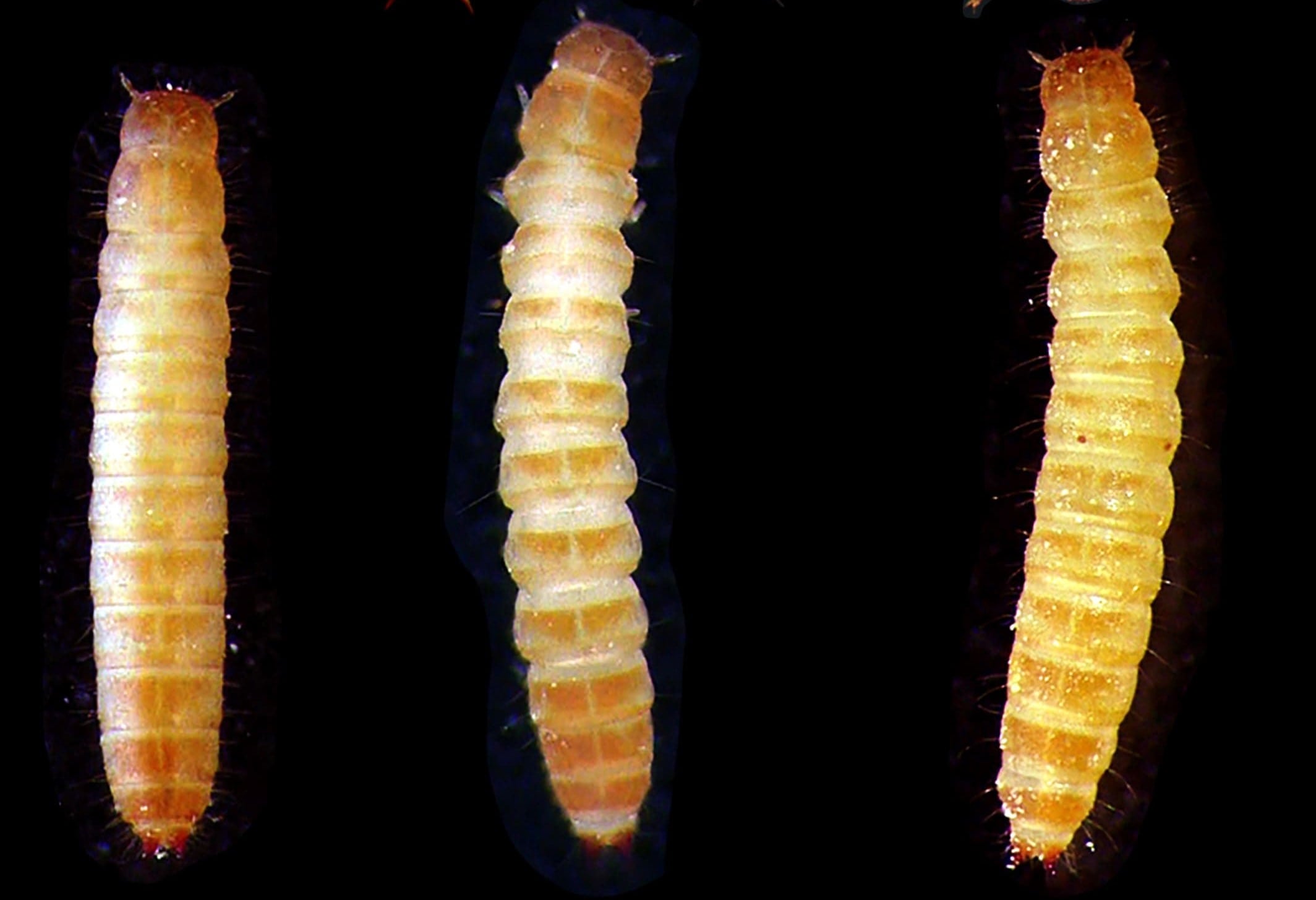La metamorfosis de los insectos podría revelar las claves de nuestro paso a la adolescencia
Una investigación liderada por el Instituto de Biología Evolutiva (IBE) descubre los mecanismos clave que inician la metamorfosis en el escarabajo de la harina.
El estudio demuestra que, sin la intervención de la miostatina, el escarabajo no puede pasar a la edad adulta y será una larva durante todo su ciclo de vida.
El estudio determina, por primera vez, la señal metabólica que inicia el paso a la edad adulta en función del peso del insecto.
La investigación de estas vías metabólicas en humanos podría ayudar a comprender la regulación de nuestro paso a la adolescencia.

Tanto en humanos como en insectos, la masa corporal desempeña un papel crucial en el inicio de la transición de la etapa juvenil a la adulta. Este proceso se desencadena al alcanzar un Peso Crítico específico. En el caso de los insectos, este Peso Crítico impulsa el inicio de la metamorfosis, mientras que en los humanos marca el comienzo de la adolescencia.
La iniciación de la pubertad en el momento preciso es fundamental para el desarrollo del individuo, ya que contar con reservas energéticas adecuadas resulta vital para la reproducción. Del mismo modo, los insectos necesitan alcanzar un peso mínimo para desarrollar con éxito las estructuras adultas y reproducirse. Ambos procesos están intrínsecamente ligados a la síntesis de hormonas esteroideas. Sin embargo, las señales que conectan la masa corporal con la pubertad y la metamorfosis siguen siendo un enigma.
El estudio, recientemente publicado en PLOS Genetics y liderado por el Instituto de Biología Evolutiva (IBE), un centro mixto del Consejo Superior de Investigaciones Científicas (CSIC) y la Universidad Pompeu Fabra (UPF), arroja luz sobre los procesos moleculares que vinculan la masa corporal con la producción hormonal, que inicia la metamorfosis y la pubertad.
Desvelado la relación entre masa corporal y síntesis de hormonas esteroideas
Cuando los insectos alcanzan su última etapa juvenil y llegan a su masa crítica, se activa la síntesis de esteroides, desencadenando así el proceso de metamorfosis. Sin embargo, se desconoce qué mecanismos provocan su puesta en marcha.
Xavier Franch-Marro, investigador principal del IBE y coautor del estudio, destaca: "Comprender la conexión entre la masa corporal y la síntesis de hormonas en insectos nos puede proporcionar pistas sobre el control del inicio de la pubertad, y establecer terapias para prevenir la pubertad prematura".
Para desentrañar este enigma, el equipo del IBE manipuló diversas vías de señalización en el escarabajo de la harina, Tribolium castaneum. Sorprendentemente, al inactivar la vía de TGFß (del inglés Transforming Growth Factor beta), observaron que las larvas del escarabajo, en lugar de iniciar la metamorfosis, permanecían en estado juvenil hasta su muerte. David Martín, investigador principal del IBE y coautor del estudio, comenta: "Comparado con los humanos, es como si, sin la activación de esta vía, nos quedáramos en un estado adolescente durante toda nuestra vida sin dejar de crecer".

Escarabajo de la harina con la vía TGFß desactivada: las larvas experimentan una prolongación permanente de su estado juvenil, manteniéndose en esta fase durante un periodo de hasta 80 días. Crédito: Xavier Franch y David Martin.
Con estos resultados, los investigadores del IBE revelaron las vías de señalización que desencadenan la producción de esteroides al final de la etapa juvenil, iniciando la metamorfosis. Sin embargo, ¿qué factor activa estas vías en el momento justo de alcanzar el Peso Crítico?
Se conoce que en los humanos la masa corporal desempeña un papel crucial en el inicio de la transición hacia la edad adulta. En consecuencia, enfermedades que afectan el peso corporal, como la anorexia o la obesidad, pueden retardar o adelantar, respectivamente, el comienzo de la adolescencia. "Hemos observado una correlación entre la masa corporal y la activación de estas vías de señalización, por lo que nos proponemos identificar las proteínas que se expresan en relación con el peso corporal", explica Xavier Franch.
Revelada la relación entre la masa corporal y el inicio de la metamorfosis de los insectos
La clave reside en la miostatina, un factor de crecimiento que se origina en los músculos durante su desarrollo y activa las vías de señalización que desencadenan la metamorfosis cuando se alcanza el Peso Crítico.
"Este factor actúa como nexo entre la producción de esteroides y el Peso Crítico, avisando al cuerpo de que se ha alcanzado un peso óptimo y que podemos iniciar la metamorfosis o la adolescencia, en nuestro caso, con las reservas energéticas suficientes", señala David Martín.
"Las vías de señalización responsables de la activación de la metamorfosis en insectos son las mismas que poseemos los humanos. Por ello, estos resultados podrían albergar claves sobre nuestro tránsito a la adolescencia y abrir la puerta a futuras investigaciones en la salud humana", destaca Xavi Franch.
Artículo referenciado: Chafino S, Salvia R, Cruz J, Martín D, Franch-Marro X. TGFß/activin-dependent activation of Torso controls the timing of the metamorphic transition in the red flour beetle Tribolium castaneum. PLOS Genetics. 2023 Nov 27;19(11): e1010897. DOI: 10.1371/journal.pgen.1010897
